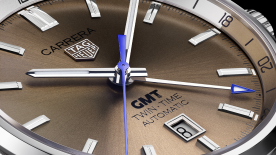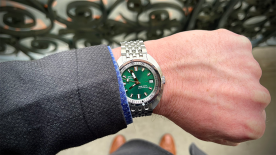First things first. The new Omega Speedmaster Chronoscope is more than your regular chronograph, hence the name. A chronograph, when broken down into its component etymological parts, denotes time-writer — a mechanism that measures time, which in its broadest sense can refer to any timekeeper. In watchmaking however, a chronograph is understood specifically as a separate function that can be used to record periods of elapsed time (like a stopwatch), distinct from a timepiece’s base function of indicating local time. Given the same etymological breakdown, the word chronoscope means time-observer, which you might think is — in practical terms — indistinguishable from a chronograph.
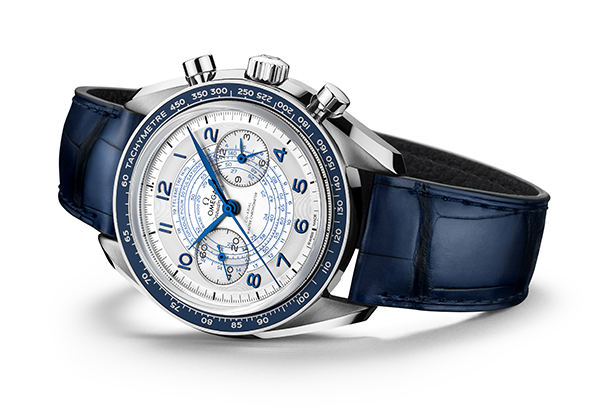
A previously released Omega timepiece, the De Ville Co-Axial Chronoscope, was indeed a straightforward three-counter chronograph. The new Speedmaster Chronoscope, however, brings additional dimension to the term. Powered by the Co-Axial Master Chronometer calibre 9908, the chronograph reading of the Speedmaster Chronoscope is augmented with three more applications of elapsed-time measurement: the tachymeter, telemeter and pulsometer.
The tachymeter is an applied scale that, when combined with a chronograph reading, tells you the speed of a moving object. When given a fixed distance, the position of the chronograph seconds hand against the tachymeter scale allows you to determine speed, a purely mathematical calculation that works no matter what units of measurement (imperial or metric) you’re using.
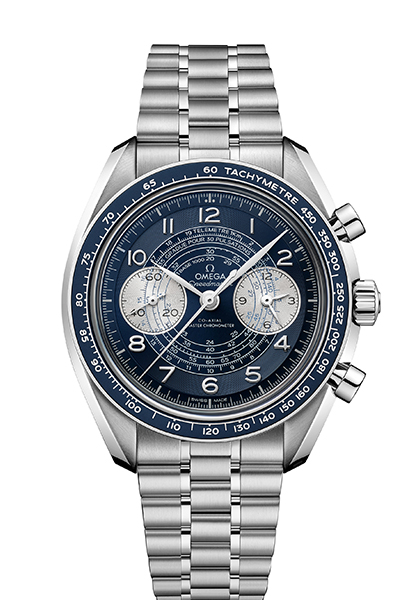
The telemeter, on the other hand, allows you to determine the distance between yourself and an event/object, given both visual and audio cues. For example, if you start the chronograph when you see a lightning strike and stop it when you hear the resulting thunderclap, the position of the chronograph hand against the telemeter scale will indicate how far the lightning strike is from you. This calculation is based on the ratio between speed of sound and the speed of light. The speed of sound is subject to slight variations depending on environmental factors such as atmospheric pressure, but the telemeter reading is nonetheless a fairly precise approximation. Unlike the tachymeter, the telemeter scale differs according to imperial or metric measurements. The telemeter scale on the new Omega Speedmaster Chronoscope is calibrated in kilometres, but any necessary conversions can be easily made, even on the spot.
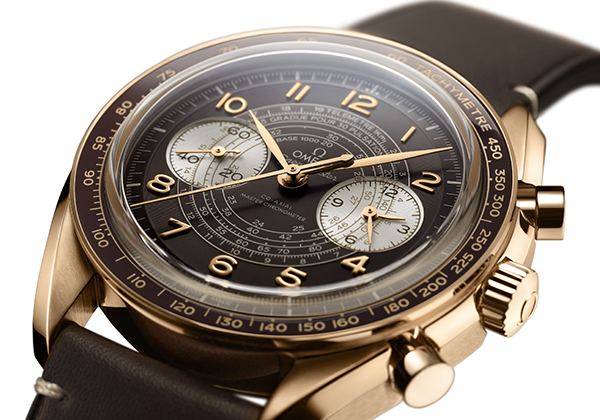
Lastly, the pulsometer scale on a chronograph was historically used by physicians to calculate heart rate. Having established a reading of the pulse,you start the chronograph, count 30 pulses and then stop the chronograph — the position of the chronograph hand on the pulsometer scale will tell you the heart rate in beats per minute.
The new Omega Speedmaster Chronoscope features a design inspired by historical chronographs from the 1940s, with a two-counter chronograph layout, the telemeter and pulsometer scales forming concentric circles on the dial, and the tachymeter scale in its familiar position on the bezel. It’s available in two materials — steel and Omega’s proprietary Bronze Gold alloy, which is engineered to be highly resistant to corrosion.



